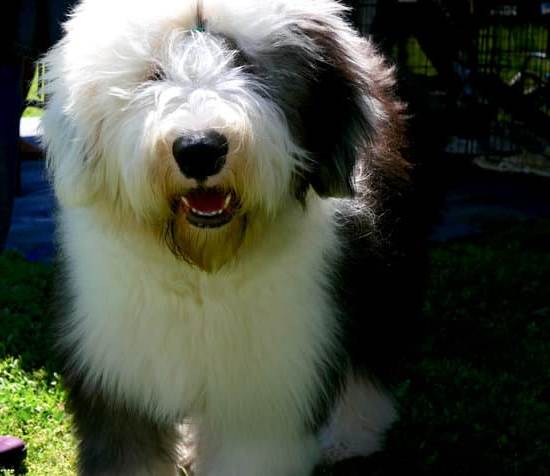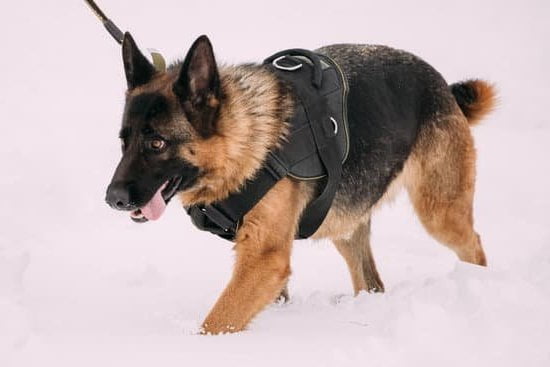Training large breed dogs can be a rewarding and fulfilling experience. However, it requires a unique approach and understanding of their specific training needs. In this introductory section, we will explore the importance of proper training for large breed dogs, key factors to consider when training them, and setting realistic expectations.
Proper training is essential for large breed dogs as they grow rapidly and can become quite powerful. It is crucial to establish obedience and control early on to prevent potential behavioral issues in the future. Large breed dogs have different physical capabilities and temperaments compared to smaller breeds, which necessitate specialized training techniques.
When training large breed dogs, several factors should be taken into account. Their size alone makes them more challenging to handle than smaller breeds. Their energy levels are often higher as well, requiring regular exercise and mental stimulation. Additionally, understanding their individual temperament is vital as each dog may respond differently to various training methods.
Setting realistic expectations is also imperative when training large breed dogs. While they are intelligent creatures capable of learning complex commands, it may take more time and patience due to their size and potentially stubborn nature. Recognizing that progress may not happen overnight will help you stay motivated throughout the training process.
By taking these factors into consideration from the start, you can lay a solid foundation for successful training with your large breed dog. In the following sections, we will delve deeper into specific aspects of training these magnificent animals – choosing the right training method, teaching essential commands, socialization techniques, addressing behavioral issues, providing exercise and mental stimulation, controlling strength and energy levels, ensuring safety during training sessions – all to help you become a skilled trainer for your beloved companion.
Choosing the Right Training Method for Your Large Breed Dog
When it comes to training large breed dogs, choosing the right training method is crucial. This section aims to provide guidance on selecting the most effective approach for your furry friend. While there are various training techniques available, positive reinforcement training has gained popularity among dog owners and trainers alike.
Positive reinforcement training focuses on rewarding good behavior rather than punishing unwanted behavior. By using treats, praise, or play as rewards, you can motivate and encourage your large breed dog to learn and obey commands. This method promotes a strong bond between you and your dog through trust and positive association.
Understanding the temperament of large breed dogs is also key in determining the appropriate training method. It’s important to remember that each dog is unique and may respond differently to different approaches. Some large breed dogs may respond well to firm and consistent training methods, while others may require more patience and gentleness.
Tailoring the training methods to suit your dog’s individual needs is essential for success. Assess your dog’s personality, energy level, and motivations to determine which techniques are most effective. For example, high-energy dogs may benefit from incorporating physical exercise into their training sessions, while food-motivated dogs may respond well to treat-based rewards.
In summary, choosing the right training method for your large breed dog involves considering their temperament and tailoring approaches to suit their individual needs. Positive reinforcement training has proven effective in many cases due to its focus on rewarding good behavior. By understanding your dog’s unique characteristics and motivations, you can create a successful training plan that strengthens the bond between you and helps your furry companion become a well-behaved member of the family.
| Training Method | Description |
|---|---|
| Positive Reinforcement Training | Rewards good behavior with treats, praise or play |
| Firm and Consistent Training | Establishes clear boundaries and expectations for behavior |
| Gentle Training | Requires patience and understanding, particularly for sensitive dogs |
| Physical Exercise-based Training | Incorporates physical activities into training sessions for high-energy dogs |
| Treat-based Rewards Training | Uses food as a motivating reward for food-motivated dogs |
Essential Training Commands Every Large Breed Dog Should Know
Training commands are an essential part of properly training a large breed dog. These commands serve as the building blocks for a well-behaved and obedient dog. By teaching these commands, you can establish clear communication with your dog and ensure their safety in various situations. Here are some essential training commands that every large breed dog should know:
- Sit, Stay, Come: These basic commands form the foundation of obedience training for your large breed dog. Teaching your dog to sit on command helps instill impulse control and teaches them to be patient. The stay command ensures that your dog remains in one place until released, which is crucial for their safety in potentially dangerous situations. The come command is vital for recall training and ensuring reliable obedience when off-leash.
- Teaching your large breed dog to walk on a leash without pulling: Walking on a leash without pulling is important not only for your comfort but also for the safety of both you and your dog. Teach them to walk politely by your side using positive reinforcement techniques like treats or praise when they maintain loose leash tension. Consistency and patience are key during this training process.
- Recall training: Large breed dogs have strong instincts and may tend to wander off if not properly trained. Recall training involves teaching your dog to come back to you promptly when called, even in distracting environments. Start in low-distraction settings before gradually increasing difficulty. Use high-value rewards, such as treats or toys, to make coming back to you more appealing than any potential distractions.
By consistently practicing these commands at home and gradually introducing them in different environments, you can ensure that your large breed dog is well-trained and responsive even in challenging situations.
Socialization Techniques for Large Breed Dogs
Large breed dogs are often known for their strength and size, which can sometimes be intimidating to others. Socialization is a crucial aspect of training for large breed dogs to ensure they are comfortable and well-behaved in various environments and around different people and animals.
In this section, we will explore the importance of early socialization and exposure for large breed dogs, strategies for introducing them to other dogs and animals, and tips to help them become comfortable in different environments.
Socialization plays a vital role in shaping a large breed dog’s behavior and temperament. It involves exposing them to different people, animals, sounds, sights, and experiences in a positive and controlled manner from an early age. Early socialization helps prevent potential behavioral issues such as fearfulness, aggression, or anxiety later in life.
One effective strategy for socializing your large breed dog is gradually introducing them to new environments, people, and animals. Start with calm and familiar surroundings before slowly exposing them to more challenging situations. Supervise all interactions carefully to ensure the safety of everyone involved.
It is also essential to provide positive experiences during socialization. Reward your dog with treats or praise when they exhibit calm behavior or interact positively with new stimuli. This positive reinforcement reinforces their confidence and helps create positive associations between new experiences and rewards.
| Experience/Interaction | Date | Response/Behavior | Reward Given |
|---|---|---|---|
| First meeting with another friendly dog at the park | MM/DD/YYYY | Eager to meet but initially cautious. Warmed up quickly. | Treats and praise |
| Exposure to loud traffic noise during a walk | MM/DD/YYYY | Initially startled but remained calm. Continued walking without fear. | Praise and encouragement |
| Introduced to a neighbor’s cat at home | MM/DD/YYYY | Curious but respectful. Maintained a safe distance. | Treats and gentle praise |
Remember, each dog’s socialization journey is unique, and it is important to tailor the process to your individual dog’s needs. Be patient, consistent, and supportive throughout this crucial training phase, and you will lay the foundation for a well-rounded and confident large breed dog.
In the next section, we will address common behavioral issues that may arise in large breed dogs and explore strategies for managing and resolving these issues through training.
Addressing Behavioral Issues in Large Breed Dogs
Large breed dogs, like any other dogs, can sometimes develop behavioral issues that need to be addressed through training. It is important for owners of large breed dogs to understand these behavioral problems and have strategies in place to manage and resolve them. This section will provide insight into the common behavioral issues that large breed dogs may experience and offer effective training methods to address these problems.
One common behavioral issue in large breed dogs is separation anxiety. This occurs when a dog becomes distressed or anxious when left alone. To address separation anxiety, it is important to gradually desensitize your dog to being alone by practicing short periods of separation and gradually increasing the duration over time. Using positive reinforcement techniques such as treats and praise during these practice sessions can help your dog associate being alone with positive experiences.
Aggression is another behavioral issue that can arise in large breed dogs. Aggression can be directed towards humans or other animals, and it is essential to address this problem for the safety of both your dog and others.
One effective training method for managing aggression is counter-conditioning, which involves teaching your dog an alternate behavior instead of reacting with aggression. For example, if your dog reacts aggressively towards other dogs, you can teach them to focus on you and perform a command like “sit” or “look at me” when they see another dog.
In some cases, addressing behavioral issues in large breed dogs may require seeking professional help from a trained behaviorist or trainer. A professional will have the expertise and experience to assess the situation accurately and develop a tailored training plan for your specific dog’s needs. It is important not to hesitate in seeking professional help if you feel overwhelmed or if you are not making progress with training on your own.
By addressing behavioral issues promptly and effectively through training, you can ensure that your large breed dog becomes a well-behaved and happy member of your family. Remember that consistency, patience, and positive reinforcement are key when working with behavioral problems. With the right approach and techniques, you can help your large breed dog overcome any behavioral challenges they may face.
Training Exercise and Mental Stimulation for Large Breed Dogs
The Importance of Physical and Mental Exercise for Large Breed Dogs
Large breed dogs require both physical and mental exercise to stay happy and healthy. Regular exercise helps to maintain their weight, build strong muscles, and prevent obesity-related health issues. On the other hand, mental stimulation is essential to prevent boredom and destructive behaviors in large breed dogs. When planning a training regimen for your large breed dog, it is important to incorporate both physical exercise and mental stimulation.
Physical exercise can take many forms, depending on your dog’s energy level and individual needs. Daily walks, jogging sessions, or playing fetch in a spacious area are great ways to burn off excess energy. Consider engaging in activities that cater to your dog’s natural instincts such as swimming or hiking. Additionally, structured activities like agility training or obedience trials not only provide a physical challenge but also test their mental capabilities.
Fun and Engaging Activities to Keep Your Large Breed Dog Mentally Stimulated
Incorporating mental stimulation into your large breed dog’s training routine is just as important as physical exercise. Providing challenging toys such as puzzle toys or treat-dispensing toys can keep your dog mentally engaged and entertained for hours. These toys encourage problem-solving skills and help alleviate boredom.
Training sessions themselves can be mentally stimulating for large breed dogs. Teach them new tricks or commands beyond basic obedience training to challenge their mind. Hide-and-seek games with treats or favorite toys around the house can also sharpen their problem-solving abilities.
Different environments can offer unique mental stimulation opportunities for large breed dogs. Taking your dog to new places such as parks, beaches, or pet-friendly stores exposes them to different sights, sounds, smells, and experiences which keep them mentally alert and adaptable.
Incorporating Training into Playtime
Combining training with playtime offers a chance to bond with your large breed dog while promoting obedience. Use play sessions as an opportunity to reinforce and practice commands they have learned during training sessions. For example, incorporate obedience training into games of fetch or hide-and-seek. This not only makes the training process more enjoyable but also helps solidify their understanding of commands in different contexts.
It is important to note that while large breed dogs need plenty of exercise and stimulation, it is equally crucial to ensure they get enough rest and downtime. Dogs also require periods of relaxation to recharge and recover from physical exertion and mental stimulation. Striking a balance between exercise, mental stimulation, and rest will help maintain a healthy lifestyle for your large breed dog.
Tips for Training Large Breed Dogs to Control Their Strength and Energy
Large breed dogs are known for their strength and energy, which can sometimes make training a challenge. However, with the right techniques and approaches, you can effectively train your large breed dog to control their strength and energy. This section will provide you with some valuable tips to help you navigate this aspect of training.
Proper leash handling techniques
When training a large breed dog, it is crucial to have proper leash handling techniques to manage their strength. Always use a sturdy leash and hold it securely with both hands, making sure it is not too loose or too tight. Avoid wrapping the leash around your hand or wrist, as this can be dangerous if your dog suddenly pulls.
If your large breed dog tends to pull on the leash, consider using a front-clip harness or head halter to redirect their attention towards you. These tools can provide better control without causing discomfort or harm to your dog.
Teaching self-control and impulse control exercises
Building self-control in your large breed dog is essential for managing their energy levels during training sessions. Start by teaching basic impulse control exercises such as “wait” or “stay.” Encourage your dog to remain calm before being released for activities such as going outside or having meals.
To further develop self-control, incorporate “leave it” and “drop it” commands into your training routine. These commands teach your dog to resist the urge to grab objects or chase after things that may excite them.
Channeling energy into productive activities
One effective way to manage the strength and energy of large breed dogs is by providing them with plenty of physical exercise. This helps them release pent-up energy in a positive manner. Regular walks, runs, and playtime sessions should be incorporated into their daily routine.
Additionally, mental stimulation is crucial for preventing boredom and destructive behaviors in large breed dogs. Engage their minds with interactive toys, puzzles, and training games. Providing them with tasks and challenges can help them focus their energy in a constructive way.
By implementing these tips into your training routine, you will be able to effectively control the strength and energy of your large breed dog. Remember to always be patient and consistent throughout the training process, as it may take time for your dog to master these skills. With dedication and positive reinforcement, you can transform your large breed dog into a well-behaved companion.
Training Safety Measures for Large Breed Dogs
Large breed dogs can possess a significant amount of strength and energy, making it crucial for trainers to prioritize safety during training sessions. By implementing proper safety measures, trainers can create a secure environment for both themselves and their large breed dogs, reducing the risk of accidents or injuries.
One important safety measure is recognizing and preventing potential accidents during training sessions. Large breed dogs are capable of knocking over objects or even people unintentionally due to their size and exuberance. To prevent this, it is recommended to clear the training area of any potential hazards such as furniture, breakable items, or other pets that may cause distractions or collisions. Creating a dedicated space for training that is free from obstacles can help minimize the risk of accidents.
Understanding the limits of your large breed dog’s physical capabilities is another crucial aspect of training safely. Despite their size and strength, large breed dogs can still be susceptible to certain physical limitations or vulnerabilities.
For example, activities that may put excessive strain on their joints or muscles should be avoided to prevent injury. Trainers should consult with a veterinarian to determine any specific restrictions or modifications needed in their training routines based on the individual dog’s health considerations.
In addition to creating a safe training environment, trainers should also prioritize their own safety when working with large breed dogs. This includes using proper equipment such as sturdy leashes and harnesses that can withstand the force exerted by these strong dogs. It is also essential for trainers to practice correct leash handling techniques to maintain control and prevent accidental injuries.
By implementing these training safety measures, trainers can ensure a secure environment that allows both them and their large breed dogs to focus on effective learning without unnecessary risks. Prioritizing safety not only protects against accidents but also builds trust between the trainer and dog, fostering a positive training experience overall.
Conclusion
In conclusion, training a large breed dog requires commitment, patience, and understanding. By following the steps outlined in this article, you can become a skilled trainer for your furry companion. It is crucial to recognize the unique training needs of large breed dogs and set realistic expectations for their progress.
Choosing the right training method is paramount to successfully train a large breed dog. Positive reinforcement training has proven to be effective in shaping desirable behaviors without causing fear or anxiety. It is also essential to consider your dog’s temperament and individual needs when tailoring training methods.
Teaching your large breed dog essential commands such as sit, stay, come, and walk on a leash without pulling provides them with a solid foundation of obedience. Additionally, recall training ensures reliable behavior off-leash and keeps them safe in different environments.
Socialization is another critical aspect of training large breed dogs. Introducing them to other animals and various environments from an early age helps prevent behavioral problems later on. Addressing any existing behavioral issues requires consistency and patience. Seek professional help when needed to ensure the best outcome for both you and your dog.
Providing ample physical exercise and mental stimulation is essential for large breed dogs’ overall well-being. Incorporating training into playtime not only enhances bonding but also reinforces obedience commands. When dealing with their strength and energy, learning proper leash handling techniques and teaching self-control exercises are key.
Finally, always prioritize safety during training sessions by recognizing potential accidents and understanding your dog’s limits physically. Create a safe environment for both you and your large breed dog to avoid any unnecessary risks.
Becoming a skilled trainer for your large breed dog is an ongoing journey that requires continuous learning and adaptation of techniques as needed. Celebrate the progress you make with your furry companion while recognizing that there may still be challenges along the way. With dedication and perseverance, you can develop a strong bond with your large breed dog through consistent training efforts.
Frequently Asked Questions
Are big dogs harder to train?
Training a big dog can be more challenging compared to training smaller breeds, but it ultimately depends on the individual dog and their temperament. Larger dogs tend to be stronger and more powerful, which can make it more difficult to physically control them during training sessions.
Additionally, big dogs may have a higher energy level or stubbornness that requires extra patience and consistency from the trainer. However, with the right approach, motivation, and positive reinforcement techniques, big dogs can still be successfully trained.
How do you train a large breed?
When it comes to training a large breed dog, it is important to focus on consistent obedience training from an early age. Start by establishing clear boundaries and rules within the household to provide structure and prevent any potential behavioral problems as the dog grows older.
Utilize positive reinforcement techniques such as rewards and treats for good behavior, while avoiding punishment-based training methods that can lead to fear or aggression in large dogs. It is also crucial to address specific needs based on the breed’s characteristics – for example, socializing a large working breed with other animals or providing ample mental stimulation for intelligent breeds like German Shepherds.
How do you train a large breed puppy?
Training a large breed puppy requires patience and understanding of their specific developmental stages. Begin by teaching basic commands such as sit, stay, come, and walking on a leash using positive reinforcement methods like treats or praise. Socialization is particularly important for larger breeds since they need exposure to various environments, people, and other animals from an early age.
This helps them develop into well-rounded adult dogs who are comfortable in different situations. Incorporate short training sessions throughout the day rather than long ones since puppies have shorter attention spans initially. Consistency is key when it comes to potty training – establish a routine and reward them when they eliminate outside.

Welcome to the blog! I am a professional dog trainer and have been working with dogs for many years. In this blog, I will be discussing various topics related to dog training, including tips, tricks, and advice. I hope you find this information helpful and informative. Thanks for reading!





